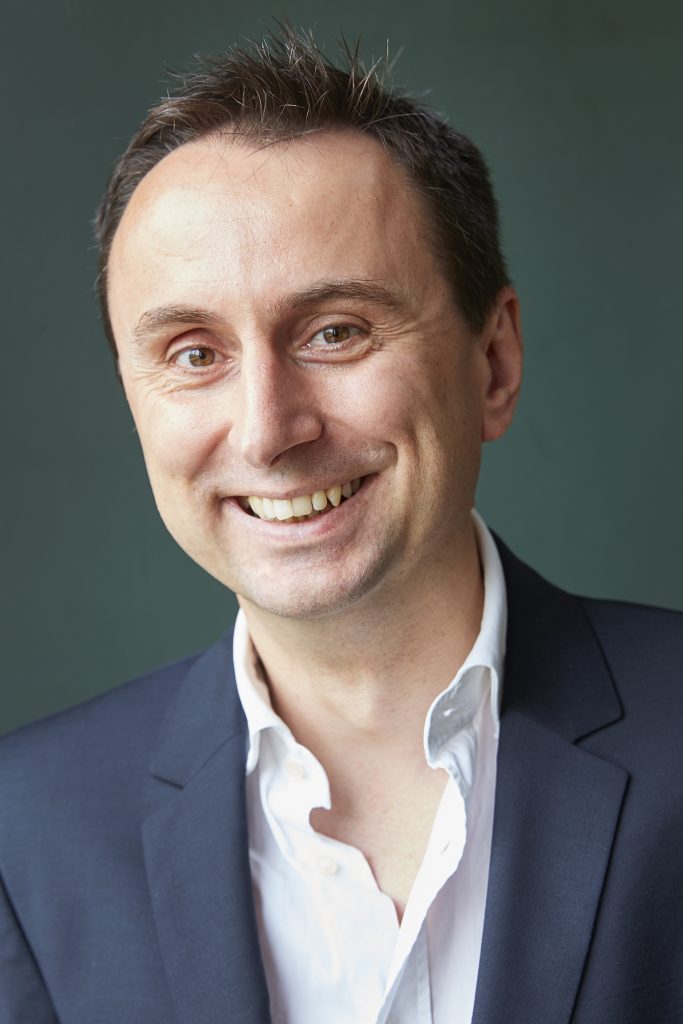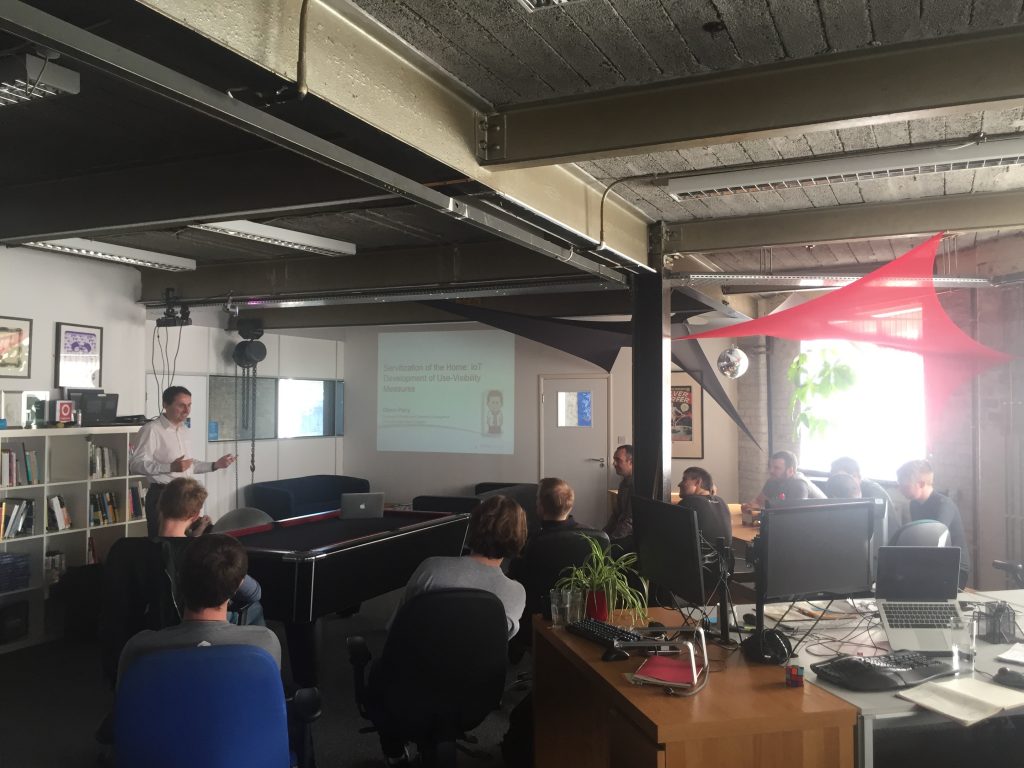We were recently joined by Glenn Parry, Professor of Strategy and Operations Management at the University of the West of England, who came in to chat to us about some of things he’s been getting up to.
His talk centred around what it means when something has value, the creation and capture of value, and the ways new technologies could help to improve sustainability within supply chains and, in turn, help our planet.
The problem of waste
Glenn pointed out the scale of the problem we face when it comes to waste and resource management. “Each person in the UK uses 150 litres of water a day and produces half a tonne of domestic waste a year” he said. “It’s really hard not to come away from the supermarket without a lot of plastic, and it’s really noticeable in my recycling boxes that the plastic one is always full” he said.
“The problem we have currently is information asymmetry in the home. Suppliers lack post-sale visibility of what happens to their product in use”
Glenn argued that the much of the problem surrounding sustainability in supply chains is because as soon as a product enters the home, suppliers and companies lose visibility on how their product is being used. “The problem we have currently is information asymmetry in the home. Suppliers lack post-sale visibility of what happens to their product in use” he said.
Glenn said that once a product enters the home and is used or consumed, that becomes the starting point of the reverse supply chain, which he sees as being where the value of a product is created.
What is value?
Glenn challenged us to think about the meaning of value and what we truly mean when we say it. “We take value to be, conceptually and theoretically, some measure of how good something is. But children and family, how do you put a value on that? We’ve all got these different value propositions going on” he said.
He told us how Plato had proposed that value can exist in two forms, intrinsic and extrinsic. Intrinsic value is where a ‘thing’ is good to have by itself. And extrinsic value where a ‘thing’ has the ability to achieve or obtain something else that is good. “The two were not viewed by Plato to be mutually exclusive, products could have both forms and that argument has been going on for years, it’s very interesting to get into it” he said.
Glenn explained how Scottish Economist, Adam Smith, in his book Wealth of Nations shaped the idea of value further. “Adam Smith’s work really started to underpin contemporary business thought, but his work on exports meant that focus was on value created in markets and through exchange. When you look at a lot of manufacturing textbooks we get productivity by making things lean, improving our supply chain and driving efficiency. It all focuses back on the exchange element” he said.
Value beyond the point of exchange
“The value of an offer to a consumer is only known when they integrate [the product] into their lives”
Glenn said the value of something must be considered in context and he sees value as something that goes beyond the point of exchange. “The value of an offer to a consumer is only known when they integrate [the product] into their lives” he said.
Glenn argued that businesses should try to understand that value takes form in many different ways and not fall into the trap of thinking you’ve sold loads of your product and that means it’s good. “We’ve got this problem with contemporary thinking. Firms judge good from looking at market demand and how much they sold, but individuals’ decisions when buying are shaped by choice and what’s available to me.”
Measuring value and new possibilities
Glenn explained how the current supply chain model makes it difficult for companies to track how their product is being used once it enters a home. “The closed loop supply chain and ‘black box’ of the home space means suppliers can’t easily collect data once their product enters a person’s home, so data stops at the home” he said.
“Capturing how good something is in use is very difficult to do, value can be the perception of the user and that means everyone has an opinion”
Glenn touched upon the difficulty of capturing the value of a product due to people’s different perception of value. “Capturing how good something is in use is very difficult to do, value can be the perception of the user and that means everyone has an opinion” he said.
Glenn said the internet of things (IoT) opens up new possibilities for companies that want to find out how their consumers are using and valuing their products. “This is when the internet of things really comes alive because you can put sensors on stuff and people, and you can get insight into a moment through data” he said.
He told us how IoT was already being used in complex settings, such as helicopters, planes and health management systems and how it is becoming cheaper for companies to access this technology. “Sensors are now getting really cheap, you can stick them in your home at very low cost, I’ve got a Fibaro system and Z-wave sensors all over my home” he said.
Shower room project
In an attempt to solve the problem of capturing data in the home, Glenn setup an IoT shower room project. He took six participants and set up sensors in their shower rooms to monitor and analyse the use of products and resources each time they used the shower room.
Glenn took a flood sensor that normally lives under a washing machine and modified it to measure water flow the shower tray. “When the shower was turned on it would start a timer, giving me the count in time of how long a single showering event went on for and how much water was being used” he said.
Taking all of us by surprise, Glenn told us his shock when he found that the average shower duration from one of his experiments was twenty one minutes. “We were always sold the myth that showers are better for sustainability, but in this case, as shower duration is so long, showers are actually using up more water” he said.
“I created the first internet of things towel, using the medium of a motion sensor”
Glenn sees IoT as being the key to improving sustainability and reducing waste in our society. “This enables, with consumer consent, a truly closed loop supply chain. If we get access to this sort of data we could then start to build mathematical equations, modelling processes in the home and starting to see, with data, what activities are mediating others, and beginning to make visible use that is currently hidden in that black box.”
That brought Glenn onto his towel experiment… “I created the first internet of things towel, using the medium of a motion sensor. With safety pins, I clipped the sensor onto my towel and left the towel on the door hook” he said. Glenn was able to track the use of his towel and mapped the results onto a graph. He told us his shock when he got the results back. “I saw big peaks from normal use. Then there were lots of little peaks that showed me that everybody was using my towel to dry their hands, I thought ‘but we’ve got a hand towel for that!’”
We’d like to say a huge thanks to Glenn for coming in to chat to the team and we really enjoyed learning more about how new technologies could help to improve our planet. You can find out more about Glenn on Twitter or on people.uwe.ac.uk.
If you’d like to discuss your startup or project, get in touch with Simpleweb today.





